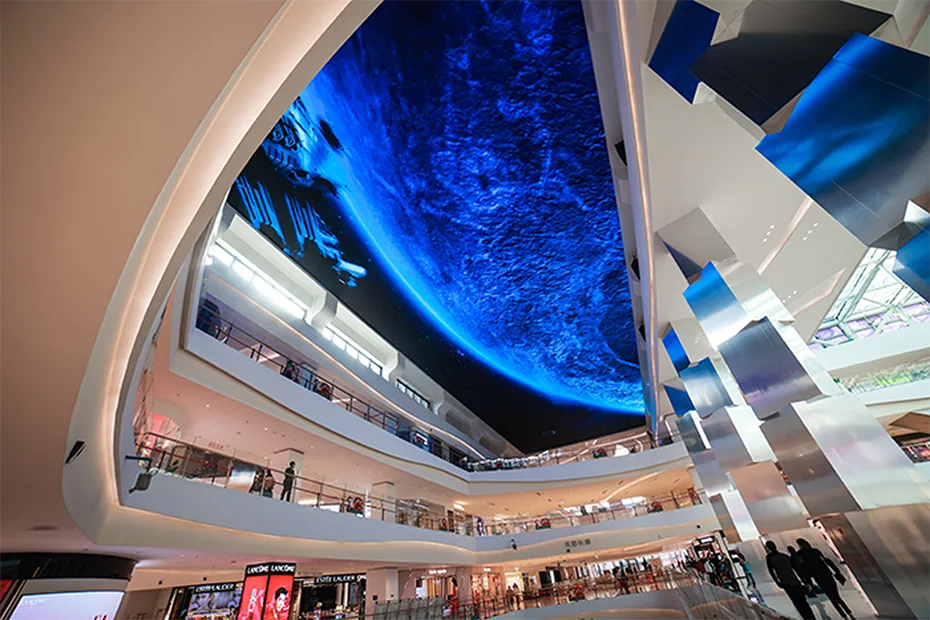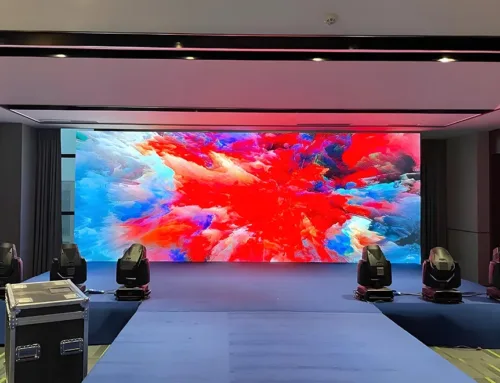In today’s visually driven world, LED displays have emerged as the shining stars of the market due to their exceptional display quality and versatility across various applications. Whether it’s commercial advertising, live sports broadcasts, art exhibitions, or public space decorations, LED displays have firmly secured their place with their unique charm. However, the impressive technology behind these captivating displays relies on a meticulously designed and complex structure. This article delves into the essential components of LED displays, unveiling the technological secrets that help us better understand and utilize this modern display technology.

1. LED Chips: The Magicians of Light and Color
At the heart of every LED display are the LED chips, the fundamental light-emitting units whose performance directly determines the display’s visual impact. Utilizing advanced semiconductor materials and precise current activation, these tiny chips produce brilliant light. The strategic combination of different colors and brightness levels in the LED chips creates vivid, lifelike images that captivate viewers.
2. Driving Circuit: The Steadfast Guardian
The driving circuit is akin to the “heart” of the LED display, providing each LED chip with a constant and appropriate current and voltage, ensuring stable illumination regardless of external fluctuations. Thoughtfully designed circuits that consider multiple factors such as current, voltage, and power lay a solid foundation for the stability and reliability of the display.
3. Control System: The Intelligent Commander
The control system plays the role of the “central nervous system” for LED displays. It accurately receives and processes external signals, commanding the LED chips to turn on or off, transforming creative concepts into real images. The integration of high-tech components such as microprocessors, memory, and interface circuits enables the system to handle complex image processing and display tasks with ease.
4. Power Supply System: The Source of Energy
The power supply system provides the continuous energy needed for the LED display to shine brightly. From converting alternating current (AC) to direct current (DC), components such as transformers, rectifiers, and filters work in harmony to create an efficient and stable energy supply system.
5. Cooling System: The Calm Protector
The cooling system is crucial in managing the heat generated during LED operation. Components like fans and heat sinks, and even liquid cooling technology in high-end displays, ensure that the display remains “cool” during extended operation, prolonging its lifespan and maintaining consistent brightness and color stability.
6. Structural Frame: The Robust Support
The structural frame acts as the backbone of the LED display, made from metal or alloy, providing sturdy support for the entire screen. Regardless of the installation environment, it ensures the screen’s flatness and stability, presenting the best possible visual effect.
7. Connection and Transmission Components: The Signal Bridge
Connection and transmission components serve as the lifeblood of information flow within the LED display. The precise coordination of cables and connectors ensures the seamless transmission of control signals, allowing each LED chip to respond accurately to commands. Modern technology has further enhanced the efficiency of signal transmission, even over long distances or in complex environments.
8. Software and Firmware: The Creative Engine
Although not physical, software and firmware are the soul of LED display functionality. Software empowers users with the freedom to create and manage content, whether it be text, images, or videos. Firmware, operating quietly in the background, drives the hardware to execute each precise instruction, making the display experience smooth and user-friendly.
Conclusion
LED displays, a masterpiece that combines technology and art, are built on a complex and precise design. Each component plays an indispensable role in achieving the display’s exceptional performance and long-term stability. By understanding these components, we can better select, use, and maintain LED displays, while also unlocking their full potential for innovation. In this era of visual spectacles, LED displays are leading us toward a brighter, more colorful future by perfectly merging technology with creativity.


